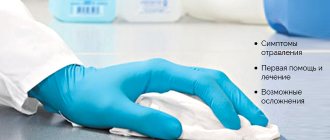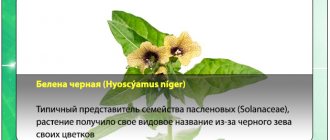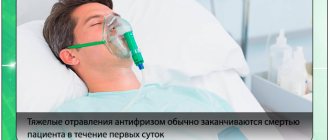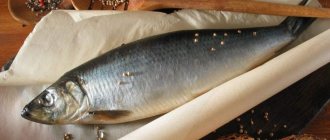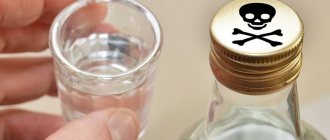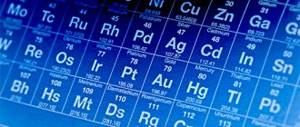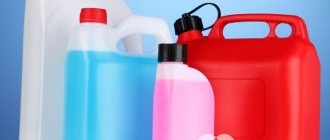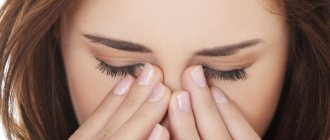Pesticides are a group of chemicals used in agriculture to protect crops from insects, parasites, weeds, and various diseases.
The principle of action of pesticides is based on the ability to suppress biological reactions. Pesticides block the action of enzymes, which makes it possible to prevent plant diseases, destroy insects and weeds, and store agricultural products longer.
But there is a downside to using pesticides. They negatively affect the microelement composition of the crop, its safety and usefulness for consumers.
Based on the mechanism of their effect on living organisms, pesticides are classified into several groups:
- pesticides – synthetic poisons that poison the object of influence (insects, bacteria, parasites, rodents);
- sterilizers – chemical substances that cause hormonal changes in a living organism, leading to infertility;
- growth inhibitors are toxins that delay and suppress the course of physical and chemical processes.
Some of the substances begin to act immediately after contact with agricultural crops, while others are absorbed by the roots, which is why they become toxic for a period of 3-6 weeks.
By intended use, pesticides include:
- insecticides - aimed at combating insect pests;
- herbicides – affect weeds;
- fungicides – counteract fungal plant diseases;
- rodenticides – kill rodents;
- fumigants – gaseous preparations that protect plants from pathogens and pests;
- nematicides - aimed at combating roundworms, and others.
The chemical composition of pesticides is varied. Pesticides may include inorganic compounds, heavy metals, alkaloids, chlorine, phosphorus, and their derivatives. Pesticides are classified into category I according to the degree of danger to the environment (extremely dangerous).
Other signs
Depending on what substances are included in the pesticides, the manifestations of intoxication may be different. If the chemicals contain phosphorus, the victim experiences respiratory and vascular dysfunction, agitation, and pupils become smaller. Wheezing can be heard in the lungs. In severe cases, the person falls into a coma and suffers cardiac arrest. When poisoning with compounds that include chlorine, the symptoms are different. The skin acquires a red tint, tears appear, discomfort in the throat, muscle weakness, disorders of the liver and urinary organs, and cough.
If intoxication occurs with pesticides containing mercury, the victim feels an unpleasant taste in the mouth. When poisoned by substances containing metals, a person’s consciousness is impaired, and malfunctions occur in the digestive and lymphatic systems.
Individuals who use such chemicals should be aware of the characteristics of pesticide poisoning, symptoms and treatment of pathology.
Review of antidotes
The choice of antidote depends on the damaging agent. The information to the doctor must be provided by the victim, his relatives or colleagues.
Chlorine or chlorine-containing pesticides - there is no specific antidote. Drugs are indicated to relieve pulmonary edema. Inhalations with hydrocortisone, subcutaneous injections of Morphine, Atropine, Eufillin.
Arsenic, mercury - the use of the drug "Unithiol" is indicated. The active substance of the drug interacts with poisons in tissues, forming non-toxic complex compounds. Metabolites are excreted through the urinary system.
The use of the drug should be started as early as possible. Unithiol is administered subcutaneously. Dosages depend on the patient’s weight and are 1 ml of a 5% solution per 10 kg of body weight. On the first day, the drug is administered every 6 hours, on days 2–3 – every 8 hours, then 1 injection per day. The duration of therapy is at least 7 days.
The drug is not used for hypertension or individual intolerance. Unithiol is well tolerated. Frequent side effects are dyspepsia.
Fluorine, its compounds - the use of Atropine sulfate is indicated. Use intravenous injections of a 1% solution of the drug. The initial dose is 2 ml of atropine. The drug is used until signs of intoxication disappear - salivation, bronchospasms, excessive sweating.
The dosage depends on the severity of the lesion. In case of mild severity, the victim is advised to administer 5 mg of the drug per day, for moderate severity – 20 mg, for severe patients – up to 50 mg per day.
"Diethixim" is used on the first day after interaction with the poison. Phosphorus forms strong compounds with acetylcholinesterase and the use of an antidote does not make sense.
The drug is administered intramuscularly. The dose and frequency of injections is determined by the severity of the patient's lesion. For mild intoxication - 0.5 g every 4 hours, for moderate - every 2 hours, for severe - 1 injection once an hour.
Diet and therapeutic nutrition are discussed with the doctor individually, depending on the severity of the patient, the infecting agent, and the characteristics of drug therapy.
Circumstances under which poisoning occurs
The main cause of the pathology is non-compliance with safety standards when working with chemicals. Such violations include:
- Poor quality processing of instruments used in agriculture.
- Lack of protective equipment on the skin surface and special clothing.
- Preparation of substances to kill pests at home.
- Failure to follow instructions when using insect repellents.
- Eating vegetables and fruits that contain chemicals can cause pesticide poisoning.
Today, pesticides are widely used not only by agricultural workers, but also by gardeners. Summer residents who are trying to reap a rich harvest, and housewives caring for indoor flowers, often use such chemicals. However, not all people are aware of the necessary precautions. Therefore, there are cases of pesticide poisoning. The article describes this pathology in detail.
How to properly help with intoxication?
The measures that need to be taken in case of illness directly depend on how the toxin entered the body. If the substance gets on the skin (this is indicated by a feeling of itching, a red tint of the affected fragment), you should take off your clothes. The chemical must be removed using an ammonia solution (10%).
Then the person needs to treat the damaged part of the body with soap and rinse it with water. In case of penetration of the toxin into the digestive tract due to pesticide poisoning, help consists of the following measures:
These measures relate to first aid methods for pesticide poisoning. The remaining procedures are carried out by doctors who take the victim to the hospital.
The doctor selects an antidote for the person - a medicine that neutralizes the toxin. The drug is introduced into the body through injection. The person is also given medications with an anticonvulsant effect, and IVs are placed. Experts call pathologies of the gastrointestinal tract and kidneys as side effects of pesticide poisoning. Therefore, for some period after intoxication, you need to adhere to a special diet.
Pesticides are chemicals that fight various parasites and fungi (in other words, they are pesticides). Today they are widely used both in the agricultural industry and in everyday life.
However, when using them, quite severe poisoning can occur. That is why you should know the symptoms of this pathology and the algorithm for providing first aid.
Providing first aid
If there are characteristic manifestations of pesticide poisoning, the patient must urgently call an ambulance. Before her arrival, you should limit contact with the poison and ensure a large flow of oxygen. It is advisable to take the victim outside. In case of constant or periodic contact with poison, the first aid kit should contain sorbents and diazepam.
Gastric lavage
This is done using plain water or a warm soda solution. The contents are poured into the stomach in fractions of 10–15 ml using umbrellas or other devices. Then they induce artificial vomiting.
Cleansing enema
An enema is required to eliminate unabsorbed poison from the intestines. Use warm water or soda solution.
Sorbents
First aid consists of taking sorbents if the poison entered through the gastrointestinal tract. Activated carbon and smecta are used.
Drink
You should drink warm tea or mineral water. It is recommended to use the latter, as it is necessary to replenish the electrolyte balance.
Pesticide toxicity
Pesticides undoubtedly have a toxic effect on living organisms, including humans. However, in order to be poisoned, a sufficient amount of pesticides must enter the body.
The toxicity (the ability to harm human health) of these substances differs in several ways:
Pesticides enter the body in several ways:
- Airborne (by inhaling toxic fumes),
- Food or nutritional (when ingesting a toxic substance or food products poisoned by it),
- Contact-household (when the skin and mucous membranes come into contact with a toxic substance).
Chloroform
Used in the manufacture of various paints and varnishes. Currently added to pesticides. The English article “Chloroform” describes cases of toxic effects on workers in paint shops. Therefore, it is important to observe safety precautions when using varnishes and solvents.
Manifestations
Chloroform poisoning is accompanied by:
- Severe headache, repeated vomiting and nausea.
- High blood pressure.
- Gait disturbance and loss of consciousness.
Even in minimal concentrations it can cause occupational illness, sometimes dermatitis and eczematous damage to the skin.
Consequences and complications
Complications from pesticide poisoning are numerous and serious. They are early and late. Early complications include :
- Coma is a persistent loss of consciousness with weakening or loss of response to external stimuli. This condition is extremely dangerous for the patient's life,
- Exacerbation of bronchial asthma , which is manifested by a severe attack of suffocation,
- Myocarditis – inflammation of the myocardium,
- Acute pneumonia . Inflammation of the lung tissue occurs when a toxic substance penetrates through the respiratory tract,
- Acute renal failure , which is characterized by a sharp impairment of excretory and filtration functions,
- Acute liver failure,
- The patient's death may occur even after full medical care has been provided. This is associated with severe damage to the brain, as well as the liver and kidneys.
We recommend reading: Detralex and alcohol: compatibility, consequences of interaction
Late consequences include:
- Chronic liver and kidney failure . During the period of exacerbation, the patient experiences symptoms of liver and kidney damage, and during the period of remission, complete well-being is observed,
- Asthenovegetative syndrome . This pathology is characterized by a disorder of the autonomic nervous system. Its manifestations vary from mild weakness to severe neurological diseases.
What to do if you lose consciousness?
Loss of consciousness is characteristic of a progressive course and damage to the central nervous system during pesticide poisoning. Immediate first aid is required. Before doing this, you should check your pulse, breathing and heartbeat. In their absence, resuscitation measures are carried out using indirect cardiac massage. It is important to pump out the victim until the ambulance arrives.
First aid for poisoning with pesticides
First aid should be provided as early as possible. This will help reduce the negative effects of the poison on the body.
First aid for pesticide poisoning consists of the following measures::
- First you need to find out what exactly the person was poisoned with, what type of pesticides,
- Stop exposure to the toxic substance . That is, take the victim into fresh air and wash off the poison from the skin. To do this, the skin is washed with a solution of baking soda, potassium permanganate or soap. The mucous membranes must be washed with plenty of clean water,
- Assess the person’s condition, call an ambulance,
- If poison enters the body through the stomach, it must be removed as soon as possible . This is done by gastric lavage. Contraindications to this procedure are: unconsciousness, young children. Have the patient drink large amounts of water and induce vomiting,
- Give something enveloping , for example jelly, raw egg yolk. You can also give Activated carbon.
To remove a toxic substance from the body as much as possible in a hospital, the following is carried out:
- Cleansing or siphon enema,
- Forced diuresis. A large amount of fluid (orally or parenterally) and diuretics are introduced into the body,
- They give sorbents (Activated carbon, Enterosgel, Polysorb),
- Antidotes are used: Unithiol (heavy metals), Atropine sulfate (organophosphorus compounds).
Pesticides enter the body in several ways:
Video from YouTube on the topic - pesticide poisoning
Read further:
Poisoning of pigs - rat poison, table salt, mustard, pesticides and protein
Which mineral water to choose in case of poisoning ✅ with food or alcohol
Soda poisoning - how to treat, proper preparation of soda solution for children and adults
How to quickly induce vomiting after eating at home for weight loss
The benefits and harms of coffee for the human body - natural or instant?
Article rating:
Share with friends:
You may also be interested in:
Overdose of bromine vapor: first aid and treatment
Exogenous intoxication and poisoning of the body
Methane poisoning
Arsenic poisoning - symptoms and causes, first aid and consequences
In what cases is intoxication possible?
In agronomy, various types of pesticides are used - organochlorine, organomercury, organophosphorus and inorganic substances, arsenic-containing preparations. Some poisons physically destroy certain types of flora and fauna without having a toxic effect on beneficial plants, insects, and animals.
The level of toxicity depends on the route of entry into the body and the dosage. The preparations are applied to the soil and sprayed using equipment. Large areas are processed from the air.
Pesticide intoxication occurs in the following cases:
- equipment malfunction;
- neglect of safety rules when working with aggressive substances;
- Children suffer due to the carelessness and stupidity of adults.
The routes by which toxic substances enter are varied. Exists:
- Inhalation intoxication occurs when toxic compounds are inhaled.
- Oral route – when ingesting an insecticide or rodenticide after or during deratization measures.
- Through the skin - when toxins come into contact with the skin.
Chronic poisoning occurs with prolonged exposure to poisons. Manifestations are blurry. Pesticides and insecticides have a cumulative effect, and the consequences of prolonged contact with poisons are characterized as severe. Possible death.
Pesticides are toxic substances that inhibit the reproduction, growth of plants and insects. Pesticide poisoning is not something out of the ordinary for specialists in toxicology departments of hospitals. Such chemistry is not prohibited for free sale, and several types of insecticides or herbicides are present in the households of gardeners, gardeners, and home plant lovers.
Types and applications
The classification of pesticides is also based on chemical affiliation. Highlight:
- Organochlorines or COCs for short.
- Organophosphorus. This group includes the well-known Chlorophos and Karbofos (Malathion).
- Containing metals in the form of mercury, arsenic or copper.
Divided depending on production purpose:
- Fungicides are used to destroy fungal pathogens.
- Insecticides are designed to combat harmful insects.
- Herbicides, against weeds.
- Acaricides are aimed at combating bedbug pests.
- Zoocides are used to kill rodents.
Currently, about 60 types of various pesticides are produced.
DDT (dust)
One of the most famous pesticides used in wartime. Represents the greatest danger to human life. It was used not only to control various pests, but also to reduce the spread of typhus and malaria. Sometimes they used it to treat insect bites.
DDT is now known to have negative effects on reproductive health. This effect was established by observing birds swimming in water pre-treated with Dust. There is also a cumulative effect associated with accumulation in cells with a high rate of division.
Aldrin
Used to combat various insects, cockroaches or mosquitoes. It has a detrimental effect on animals, as it is capable of rapid accumulation. It is prohibited in many countries due to its pronounced negative effects. It is more effective than DDT.
Dildrin
Belongs to the group of insecticides derived from Dieldrin. Added for processing products made from wool. Kills an insect by affecting its nervous system and causing paralysis. Low toxicity, does not have cumulative effects.
Endrin
A highly toxic pesticide with pronounced stability in the environment. Previously, it was used to destroy the most harmful insects and rodents. Currently banned in many countries due to the danger to animals and people. It is noted that the toxicity of Endrin is 2 times higher than that of DDT.
Hexachlorobenzene
Used to combat insects and fungi. Now it is not common due to toxicity and negative effects on animals. It is a polytropic poison, therefore it affects all organs and systems. May cause death if poisoned.
Symptoms and signs of poisoning
According to ICD 10, poisoning with agrochemicals is assigned code X48. Plant nutrition products and fertilizers are included separately in the classification. Nitrates are not classified as pesticides.
Symptoms depend on the type of intoxication (acute or chronic), the degree of damage by the toxic substance. Signs of poisoning do not depend on the pathogenesis and toxic agent.
Symptoms by which poisoning by agrochemicals and pesticides is diagnosed.
| Duration of exposure | Degree | Signs |
| Acute poisoning | Lightweight |
|
| Average |
| |
| Heavy |
| |
| Chronic |
|
According to ICD 10, poisoning with agrochemicals is assigned code X48. Plant nutrition products and fertilizers are included separately in the classification. Nitrates are not classified as pesticides.
Pesticides are dangerous chemical compounds used to control insects. The substance has phytotoxicity - the ability to adversely affect plants and animals. They are widely used in agricultural activities to preserve the harvest of vegetables and fruits and destroy weeds. Insect control is the direct task of pesticides. The need for use is determined by statistical data on the number of insects. If you cancel spraying or other use of chemicals, then 50% of the crop will be destroyed by pests, including birds and rodents.
- Herbicides. This species is used for soil irrigation. Pesticides destroy weeds. Herbicides selectively affect certain plant species.
- Fungicides. Inorganic type based on sulfur, copper, mercury. Used to combat plant diseases caused by fungi. This pest makes a significant contribution to crop damage. When spraying plants with the mentioned type of pesticides, signs of damage do not appear on the protected crops and the damage does not progress.
- Insecticides. They contain arsenic and other potent poisons. Kill insects that eat plants. Some species infect living organisms upon contact with the body. There are natural and synthesized in chemical laboratories.
- Acaricides. Designed to combat certain insects: ticks.
- Seed protectants or repellents. They do not kill insects, but make them infertile and scare away birds.
- Bactericides. Destroy bacteria that cause plant diseases.
- Defoliants. Causes premature shedding of tree crowns.
- Zoocides. Designed for animal control.
- Nematicides. I provoke the death of roundworms.
- Plant growth regulators. They control the height of plants and the weight of fruits and roots.
We recommend reading: Intermittent bronchial asthma: treatment and prevention
Pesticides are poisons; their effects on insects, birds, animals and humans are destructive. When used correctly in limited quantities, these pesticides are designed to protect the crop from agricultural pests without losing its quality and quantity. The substances are used in all countries of the world in varying amounts. In Russia, the lowest dosage of chemicals is used to control agricultural pests.
According to production methods, the following groups are distinguished:
- Inorganic – compounds of fluorine, mercury and other chemicals.
- Organic – preparations obtained and synthesized based on components contained in plants.
- Completely chemical substances obtained in the laboratory without the use of natural biological material.
Based on their form, commercially available substances are divided into the following types:
- Powder;
- Aerosol;
- Emulsion;
- Granules;
- Solution;
- Dye;
- Chemical pencils, other solid forms for local pest control.
Pesticides and their varieties
The chemical industry produces a huge amount of pesticides. But there are five main forms of release. They are divided into organic, inorganic, bacteriological, fungal and plant. The most common group of organic pesticides. They destroy pests due to maximum physiological activity.
Pesticides are substances of chemical, biological or combined origin and, as a rule, used to protect human health from harmful and dangerous organisms. The areas of application of poisons are varied - from medicine to the food industry.
However, pesticides are most often used in the agricultural industry to combat multiple pests and plant diseases, as well as to regulate the growth of agricultural crops. The production of pesticides is growing every year, adding new drugs to their list.
First aid for intoxication
To diagnose chemical poisoning, you should consult a doctor or call an ambulance as soon as possible. Symptoms indicate intoxication. First aid must be provided immediately if any of the signs of poisoning are present.
First, it is necessary to determine the method of entry of the pesticide into the body. If the poison has penetrated the skin, it is recommended to take a shower, remove all clothing and pack it in a sealed bag to prevent spread. The affected areas of the skin should be wiped with a solution of ammonia or soda solution. If the substance gets on the mucous membranes, rinse the contact areas thoroughly with running water. If ingested orally, immediately rinse the stomach with plenty of drinking water, causing profuse vomiting. First aid does not replace the need to call a doctor to determine the degree of poisoning, eliminate it, and minimize possible consequences.
Consequences of chronic poisoning
The pathogenesis of chronic poisoning develops within one week from the onset of poisoning, if the intake of the harmful substance is regular. With the chronic form of the lesion, diseases of the cardiovascular tract and respiratory tract develop. Allergic reactions occur with chronic poisoning.
In the field of agriculture, occupational diseases are distinguished: bronchial asthma, dermatitis. Long-term intoxication leads to mutations in subsequent generations or across a generation. Treatment of such diseases is difficult or impossible.
Consequences of acute poisoning
In case of acute poisoning, the consequences are as follows:
- Nausea and vomiting;
- Difficulty breathing;
- Increased body temperature;
- Exacerbation of chronic diseases;
- Weakness and malaise;
- Headache.
Complete removal of the chemical occurs after 10 days. In a single case of poisoning, the consequences do not bother the patient. Full recovery occurs after 10 days. The elimination period depends on the presence of concomitant diseases and the resistance of the infected person to infections, as well as the tendency to allergic reactions. Insecticide poisoning can be fatal.
- Herbicides. This species is used for soil irrigation. Pesticides destroy weeds. Herbicides selectively affect certain plant species.
- Fungicides. Inorganic type based on sulfur, copper, mercury. Used to combat plant diseases caused by fungi. This pest makes a significant contribution to crop damage. When spraying plants with the mentioned type of pesticides, signs of damage do not appear on the protected crops and the damage does not progress.
- Insecticides. They contain arsenic and other potent poisons. Kill insects that eat plants. Some species infect living organisms upon contact with the body. There are natural and synthesized in chemical laboratories.
- Acaricides. Designed to combat certain insects: ticks.
- Seed protectants or repellents. They do not kill insects, but make them infertile and scare away birds.
Poisoning by chemicals on the skin or mucous membranes
When poisons get on the skin, the nature of the damage also depends on the nature of the chemicals: alkalis and acids leave a burn, highly toxic damaging substances are absorbed and penetrate into the blood through the skin, directly affecting the functioning of internal organs and systems. The following symptoms may be observed:
- traces of burns of varying degrees at the site of contact of the substance with the skin (from redness to blisters or corrosion of the skin),
- allergic manifestations: redness, rash, spots, etc.,
- strong pain,
- breathing and heart rhythm disturbances.
Principles of treatment
Before prescribing drugs, diagnosis is necessary. It is based on the clinical picture and characteristic blood changes.
- Etiological, aimed at the cause.
- Pathogenetic.
- Symptomatic.
- If possible, antidote.
We recommend reading: Lactofiltrum or filtrum-sti: which is better, what are the differences
The antidote is not used for all poisons. For example, COS does not have such therapy. Unitol, Atropine, and cholinesterase activators are often used.
The poison must be removed. The patient's conjunctiva and stomach are washed and the throat is gargled. If the pesticide gets on the covers, they are wiped with water and laundry soap. The clinic also performs forced diuresis and, if necessary, hemodialysis.
Symptomatic therapy consists of using:
- Anticonvulsants.
- Muscle relaxants.
- Antibiotics.
- Glucocorticosteroids.
Pathogenetic is aimed at:
- Supporting the functioning of important vital organs.
- Restoration of electrolyte disturbances.
- Breathing support.
- Prevention of pulmonary edema and other complications.
Chronic pesticide poisoning should be treated only symptomatically. Everything will depend on the prevailing clinical picture. It is recommended to follow a proper diet, with the addition of plenty of protein and fat. Avoid alcohol and smoking.
First aid
The medical team that arrives to the call immediately begins antidote therapy. The antidote for damage to FOV and carbamates is atropine; intoxication with organochlorine xenobiotics requires intravenous infusion of gluconate or calcium chloride. Exotoxicosis with mercury and copper compounds is treated with nonspecific antidotes. The drug of choice is unithiol. Symptomatic treatment and active infusion therapy with crystalloids are indicated. Correction of acidosis is carried out with buffer solutions. The development of respiratory failure is the reason for the initiation of hardware respiratory support.
Restoration of the body
The duration of recovery of the body depends on the degree of poisoning. Restoration of organ functions begins immediately after the patient’s admission to the hospital:
- Symptomatic therapy is carried out , aimed at eliminating pathological symptoms (anticonvulsant, antiallergic, resuscitation, restoration of renal activity, and so on),
- Hemodialysis . This procedure helps remove poison from tissues and organs,
- Forced diuresis,
- Therapeutic nutrition (the first day of fasting and drinking plenty of fluids, then slimy soups and porridges).
However, it should be remembered that the recovery period continues even after the patient is discharged from the hospital.
At home, you should follow the following rules to help you recover:
- Following a diet , especially if the poisoning was severe. It is recommended to eat light foods with liquid and puree consistency. Then the menu expands, but for a long time there remains a ban on fatty, fried, smoked, salty, canned food, alcohol,
- Compliance with a gentle regimen . The patient needs proper sleep and daytime rest. It is extremely undesirable to experience stress and nervous tension during the recovery period.
Symptoms and signs of poisoning
Pathology manifests itself in different ways. There is a direct dependence of symptoms on the type of toxicant and its dose. Organophosphorus compounds lead to the development of miosis, spasm of accommodation. There are cramping abdominal pains, vomiting and nausea, and severe weakness. The victims exhibit hypersalivation and paroxysmal cough caused by spasm of the respiratory tract. Bradycardia and hypertension occur, which are subsequently replaced by a decrease in blood pressure. In severe cases, paresis, paralysis, blockage of the respiratory center, and convulsions are detected.
Organochlorine poisons provoke the appearance of tremors, increased salivation and sweating, and increased nervous excitability. Victims are diagnosed with convulsive readiness, often followed by tonic-clonic convulsions. There is a loss of coordination, ataxia, and difficulty breathing. The pupils dilate and exophthalmos may be present. The digestive system reacts with the development of vomiting, nausea, and abdominal pain, localized mainly in the epigastric zone.
Intoxication with organomercury substances is accompanied by the appearance of general weakness and a metallic taste in the mouth. Headache, diarrhea mixed with blood or mucus, vomiting, and abdominal pain are noted. The victim experiences extreme thirst. Hypotension, compensatory tachycardia, and heart rhythm disturbances are determined. The patient is unstable in the Romberg position. In chronic poisoning, bleeding gums, arthralgia, and myalgia are present. Psychoses, hallucinations, and epileptimorphic seizures occur.
Infection with copper compounds is characterized by difficulty breathing, a metallic taste in the mouth, and a dry, debilitating cough. There is a burning sensation in the eyes, lacrimation, severe headache, which is accompanied by nausea. Hyperthermia and discomfort in the muscles and joints are diagnosed. Vomit is bluish in color, sometimes streaked with blood or mixed with hematin hydrochloride (coffee grounds). The development of epileptic seizures and multiple organ failure is possible.
Damage to carbamates is accompanied by the occurrence of nicotine-like and muscarinic-like syndrome. A similar, but more pronounced picture is observed in case of poisoning with FOV. Carbamates are metabolized relatively quickly in the body, which significantly reduces the time of convalescence compared to organophosphorus toxicants. Lethal outcomes occur mainly with targeted oral ingestion of poisonous liquid.
Pathology requires immediate first aid to the victim. If the person is conscious, before the ambulance arrives, the stomach should be rinsed using a tubeless method, then given 6-8 tablets of activated charcoal. Attempts at washing during a coma or stuporous state are prohibited. If blood pressure is reduced, it is necessary to lay the patient on a horizontal surface, place a cushion 40-50 cm high under his feet, and ensure a flow of fresh air.
